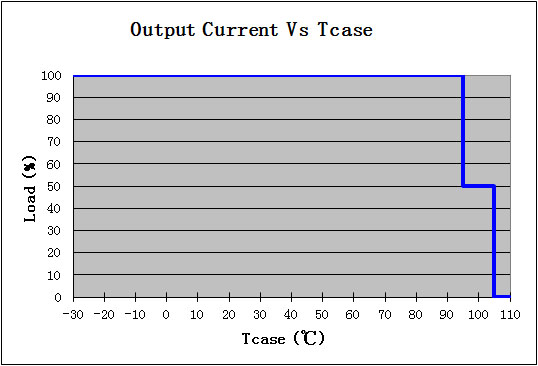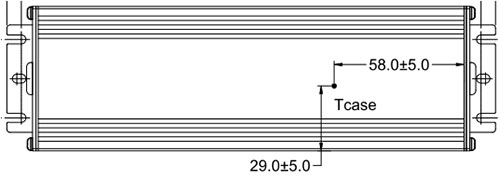ANP151 Product Launching Center
Unique Functions and Features
The ANP151 series is loaded with features you don't normally see on a common LED driver design:
When our competitors promote their LED drivers, they talk about characteristics such as accepting universal input up to 277Vac, high output power efficiency number, aluminum IP65+ case, UL certification, high build quality or competitive pricing structure. Yes, these are all the important functions to make an LED driver reliable and good. But, we don't want to make just another good 150W LED power supply. This is why Amperor has incorporated all the above mentioned features in their "standard" design and has worked with industry leaders to include "extra" features to further enhance the driver performance.
If you still want to confirm the specifications of the ANP151 series, please click here to visit the product page. You can also download the latest datasheet at HERE. Below, we are going to focus on the extra features of the ANP151 family.
Two-Stage Over Temperature Protection (OTP) Circuitry:
There is a major benefit for not having the light completely turn off in the higher than expected temperature environment. Some components in the light might act up to generate excessive heat in this condition. No doubt a service session needs to be scheduled to fix the issue. However, if the light can still produce a less than normal output while waiting for service, it can make sure the location does not go totally dark and can greatly reduce the risk of accident.
Amperor's ANP151 series includes an OTP circuitry to do so. Its first OTP trigger point is set at case temperature 93C (200F) which is already an upgrade to the industry norm: 85C. Instead of shutting down the driver, it switches itself to the 50% output mode after triggering. The restrained current ensures the slowdown of the two main heat generating sources, LEDs and the LED driver, in the light. In our lab, we have noticed a more than 10C (50F) case temperature drop after the activation of the first OTP stage.
We have found a small number of LED driver manufacturers integrating the same approach in the OTP circuitry design. However, most of them omit the implementation of the 2nd OTP stage. Amperor has set the 105C case temperature as the 2nd OTP stage triggering threshold. If, for some reasons, such as the present of the thermal runaway issue or other fault conditions, the case temperature keeps raising after the activation of the 1st OTP stage, the driver will protect itself by completely cutting off the output.
Another benefit of this two-stage OTP setup is now the ANP151 can automatically perform the output power de-rating task. Without this auto-mechanism, the lighting fixture designer needs to calculate the possible highest ambient temperature the fixture might see, and load the driver according to the de-rating curve. In other words, the driver won't be utilized to its highest potential under the normal, most common temperature condition. This will force the designer to specify a higher power rating driver and result in the system cost inflation.
Below is the temperature vs. output power de-rating curve of ANP151. Again, the driver can achieve the de-rating task automatically. This should provide a worry free usage experience for the light fixture designer and accomplish the cost saving in the system level.


ANP151 Tcase Sensing Location
Optional Thermal Protection Port Design:
An optional system level thermal sensing port can be equipped on the ANP151. The port consists of two wires from the driver. By connecting the wires to an Amperor suggested thermal switch and have the thermal switch installed at the proper location in the light, ANP151 can monitor the temperature in the system and provide a system level two stage OTP as described above.
When the thermal protection port is equipped in the driver, two rules need to be follow to make the driver operate correctly.
- When the two wires of the port are shorted together, the driver can perform like the port is not installed.
- When the port is opened without having the thermal switch installed in the system, the driver stays in the off stage.
Please contact Amperor for the recommended thermal switch usage and how to order the ANP151 with the port installed.
Optional 12V Auxiliary Output:
The optional 12V auxiliary output channel can come in handy if the lighting fixture design calls for a second power source. For example, one of our existing customers requires to install a vital signal measurement unit in the light. They want to collect the power usage data and present the data to the utility company to negotiate for a rate drop. The 12Vaux channel is set apart from the main output of the driver and can stay in the on stage when the AC input is applied. It is the best candidate to power that measurement unit in the light.
Another example is to use the 12Vaux to power a thermal sensing circuitry on the system PCB. By working with the dimming port of the driver, a system level OTP can be constructed. Also, the 12Vaux output can be used to power a DALI or other control interface unit. It can enable the usage of the ANP151 driver in a smart control system.
Two Different Shapes:
We don't expect a single case design to fit into all kinds of light housing. ANP151 can be built in two shapes:
- Rectangular shape: 8.07" x 2.54" x 1.5" (205mm x 64.5mm x 38mm)
- Square shape: 4.13" x 3.94" x 2.28" (105mm x 100mm x 58mm)
The rectangular one fits into most roadway lights, street lights and flood lights. If the length of the driver is an issue, the square shape driver can be used. It fits into most canopy lights, spot lights, and post-top lights.
Cross-Reference Guide:
Meanwell
Meanwell P/N |
Amperor P/N |
Notes |
HLG-120H-C350 |
ANP151-440P1-277 |
350mA |
HLG-120H-C700 |
ANP151-220P1-277 |
700mA |
HLG-120H-C1050 |
ANP151-154P1-277 |
1050mA |
HLG-120H-C1400 |
ANP151-110P1-277 |
1400mA |
Philips Advance
Meanwell P/N |
Amperor P/N |
Notes |
929000702202 |
ANP151-440P1-277 |
350mA |
929000702202 |
ANP151-220P1-277 |
700mA |
929000705113 |
ANP151-440P1-277 |
350mA |
929000705113 |
ANP151-220P1-277 |
700mA |
929000709003 |
ANP151-440P1-277 |
350mA |
929000709003 |
ANP151-220P1-277 |
700mA |
929000709003 |
ANP151-154P1-277 |
1050mA |
LEDINTA0350C425DO |
ANP151-440P1-277 |
350mA |
LEDINTA0350C425FO |
ANP151-440P1-277 |
350mA |
LEDINTA0700C210DO |
ANP151-220P1-277 |
700mA |
LEDINTA0700C210FO |
ANP151-220P1-277 |
700mA |
LEDINTA1050C140DO |
ANP151-154P1-277 |
1050mA |
LEDINTA0700C210FO |
ANP151-110P1-277 |
1400mA |
XI150C035V425MPH1 |
ANP151-440P1-277 |
350mA |
|